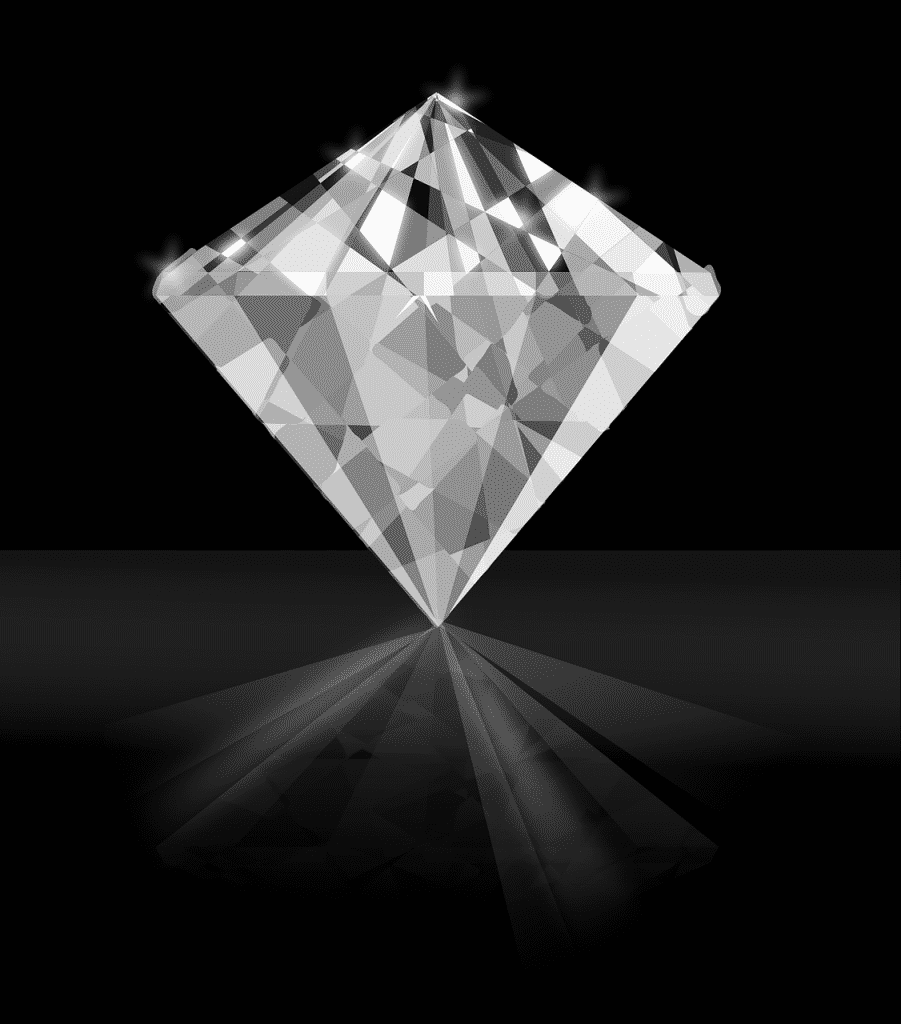Diamonds are some of the most desirable precious stones in the world. As a matter of fact, they are regarded as the kings amongst all gemstones, and they are very expensive and rare. Diamonds are rare in the sense that they can only be found in about 35 countries across the world (and even within these countries, they can only be found in certain areas where their ores are deposited). This is because diamonds are formed under very specific conditions, which involve the subjection of elemental carbon to high pressure and high heat. One of such diamonds is the Koh-i-noor.
WHAT IS THE KOH-I-NOOR?
The Koh-i-Noor is a diamond which is also known as the Kohinoor or Koh-i-Nur. It is one of the biggest cut diamonds in the world, which weighs about 105.6 carats (about 21.12 g). It is a brilliant diamond, which has been cut into an oval shape. It is colorless or white (color D) and in dimensions, it is 3.6 cm long, 3.2 cm wide and 1.3 cm deep. This brilliant diamond has 66 facets and it was cut by Levie Benjamin and Voorzanger. Uncut, its carat weight was about 793 (carats). The Koh-i-Noor is a notable piece among the crown jewels, as it is currently set in the Crown of the Queen Mother. However, this particular diamond piece has an illustrious history.
Koh-i-Noor is a name that means “Mountain of Light” in Persian, and though it is set in one of England’s Crown Jewels, it does not originate from the country. In actuality, the Koh-i-Noor is originally from India, where it was possibly mined from Kollur Mine, during the era of the Kakatiya dynasty; a dynasty in the history if India which ruled a large majority of the eastern Deccan region at that time. Today, this region is made up of Andhra Pradesh, Telangana, southern Odisha and parts of eastern Karnataka. This dynasty had its capital in Orugallu (which is present day Warangal). Later on, the Koh-i-Noor was obtained by Delhi Sultan Alauddin Khalji and at some point, it also became a part of the Mughal Peacock Throne.

THE HISTORY OF THE KOH-I-NOOR
When the Koh-i-Noor was first mined during the Kakatiya dynasty, there was no record of its original weight. However, the earliest known – and well-attested – record of its weight placed the gemstone at 186 carats. From the time it was mined, this gemstone has changed hands from one owner to another. First, it was acquired by Delhi Sultan Alauddin Khalji, then, at some point, it was part of the Mughal Peacock Throne. Following this, the Koh-i-Noor was passed from owner to owner across the ancient Indian region, until it eventually ended up with Queen Victoria (it was ceded to her after the annexation of the Punjab by the British in 1849). This occurred during the reign of emperor Muharaja Duleep Singh, who was eleven years old at the time; this eleven-year-old emperor’s reign was heavily influenced by Gulab Singh, the 1st Maharaja of Jammu and Kashmir, who also happened to be an ally of the British empire.
This rich history of the Koh-i-Noor is one of the reasons why it is so prized and esteemed to this day. It is also why the stone has such a great cultural significance.
Aside from this, there is a little bit of superstition surrounding the Koh-i-Noor. Apparently, the stone has always inspired men to fight, which is why it has always been worn by women from the time of Queen Victoria. As a matter of fact, the crown in which the stone is set is traditionally the Crown of the Queen Mother.
THE CUT OF THE KOH-I-NOOR
From the onset, the Koh-i-Noor was cut similarly to other diamonds which could be traced back to the Mughal-era diamonds; like the Darya-i-Noor, for instance, which is now part of the Iranian Crown Jewels (the Darya-i-Noor, whose name translates to “Sea of light” in Persian, is one of the diamonds that has the largest cut in the world. It is pale pink in color and weigh an estimated 182 carats. Like the Koh-i-Noor, it was also mined from Kollur Mine in India, which is now known as Andra Pradesh. At some point, this jewel was owned by the Kakatiya dynasty and then the Khalji dynasty, but eventually, it fell into the hands of Iran, where it remains to this day).
However, in 1851, it was re-cut at the order of Prince Albert (Queen Victoria’s husband), when the diamond’s initial lackluster cut did not impress those who came to view it at the Great Exhibition in London. Consequently, the diamond was cut into its now known brilliant oval shape.
Although, the culet – which is a point at the bottom of the gemstone – is uniquely broad, which creates the illusion of a black hole in the stone when it is viewed head on, this stone (the Koh-i-Noor) is usually described as being “full of life.”

WHERE IS THE KOH-I-NOOR DIAMOND?
There have been several claims which have been made by the governments of India, Pakistan, Iran and Afghanistan regarding the true ownership of the Koh-i-Noor. However, England continues to hold on to the jewel because the Crown states that it (the Koh-i-Noor) was legally obtained, in accordance with the terms of the Last Treaty of Lahore.
Today, this stone (the Koh-i-Noor) is set into the Crown of the Queen Mother, which makes it a very significant part of the British Crown Jewels. And like all the other Crown Jewels of England, it is kept at the Tower of London’s Jewel House; where it is on public display.
There have been many disputes and claims by several governments – those of India, Pakistan, Iran and Afghanistan, particularly – about whether the jewel’s current location is the right place for it to be; as each of these governments would prefer if it was returned to them (because each of them have held ownership to the Koh-i-Noor at some point in history). However, of all these claims, that of India is perhaps the most popular, since the Koh-i-Noor was originally mined from there (from Kollur Mine, which is now known as Andra Pradesh).

